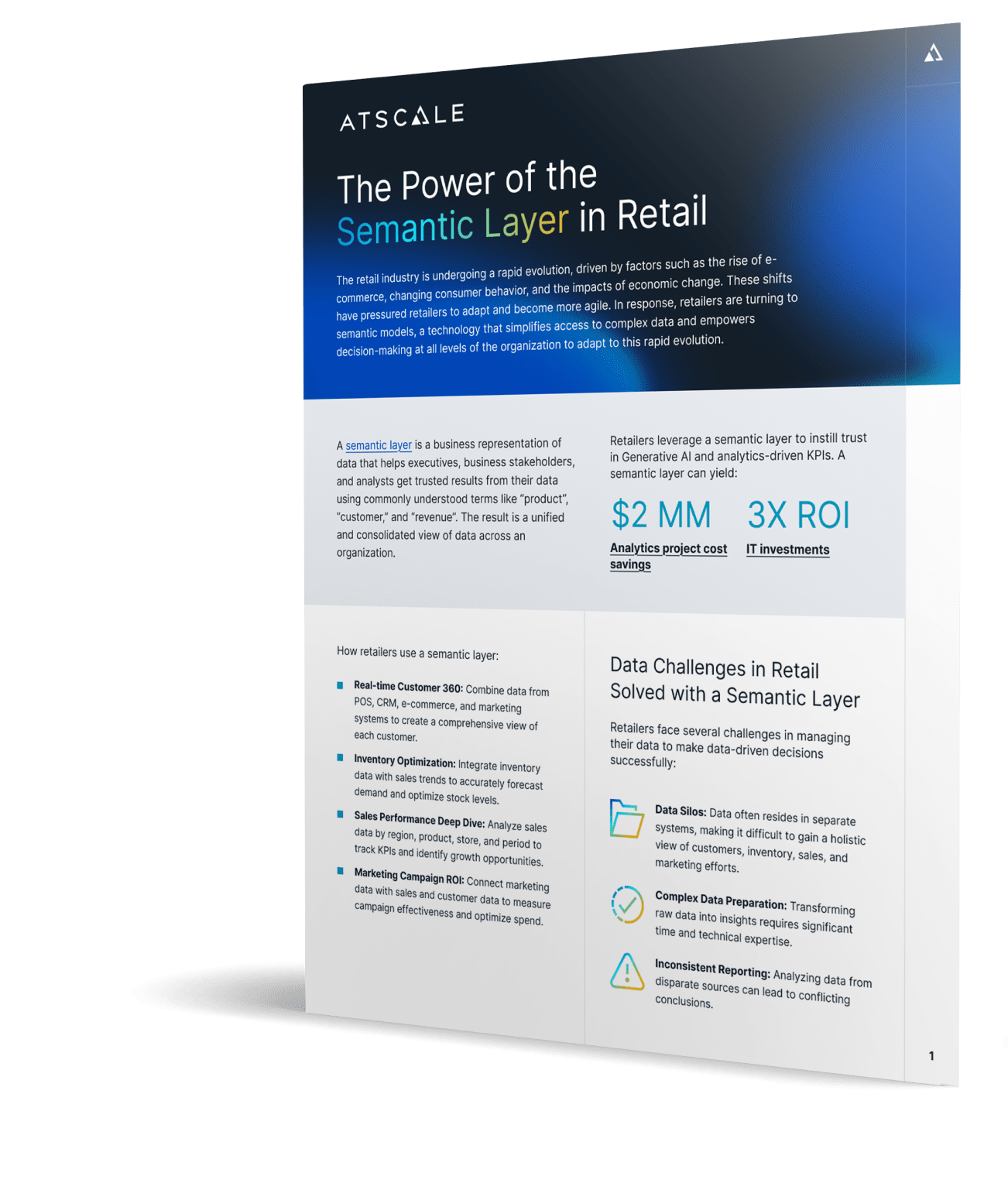The Role of a Semantic Layer
A semantic layer is a business representation of data that helps executives, business stakeholders, and analysts get trusted results from their data using commonly understood terms like “product”, “customer,” and “revenue”. The result is a unified and consolidated view of data across an organization.
Retailers leverage a semantic layer to instill trust in Generative AI and analytics-driven KPIs. A semantic layer can yield:
- $2+ million in analytics project cost savings
- 3x increase in ROI of IT investments
How retailers use a semantic layer:
- Real-time Customer 360: Combine data from POS, CRM, e-commerce, and marketing systems to create a comprehensive view of each customer.
- Inventory Optimization: Integrate inventory data with sales trends to accurately forecast demand and optimize stock levels.
- Sales Performance Deep Dive: Analyze sales data by region, product, store, and period to track KPIs and identify growth opportunities.
- Marketing Campaign ROI: Connect marketing data with sales and customer data to measure campaign effectiveness and optimize spend.
Data Challenges in Retail Solved with a Semantic Layer
Retailers face several challenges in managing their data to make data-driven decisions successfully:
- Data Silos: Data often resides in separate systems, making it difficult to gain a holistic view of customers, inventory, sales, and marketing efforts.
- Complex Data Preparation: Transforming raw data into insights requires significant time and technical expertise.
- Inconsistent Reporting: Analyzing data from disparate sources can lead to conflicting conclusions.
The ROI of a Semantic Layer
A semantic layer offers several benefits to retailers, including:
- Optimized Cloud Costs: Semantic layers reduce cloud analytics costs by over 3x by optimizing compute usage, improving query performance, eliminating redundant data copies, and streamlining data preparation.
- Optimized Human Capital Costs: Using a semantic layer reduces the effort for a typical 1,000-hour analytics project by nearly half. An average organization has 25 such projects annually, estimating savings of $2.3 million annually.
- Trusted Results through Data Governance: AtScale’s semantic layer enables natural language prompting, delivers result consistency, and improves text-to-SQL performance, achieving nearly 100% accuracy by providing analysts and LLMs with a common business language by mapping diverse data into familiar terms like “product,” “customer,” and “revenue.”
- Accelerated Time to Insights: Improve query performance by over 4x. Semantic layers simplify and automate data preparation, empowering BI and Generative AI initiatives to uncover insights faster.
